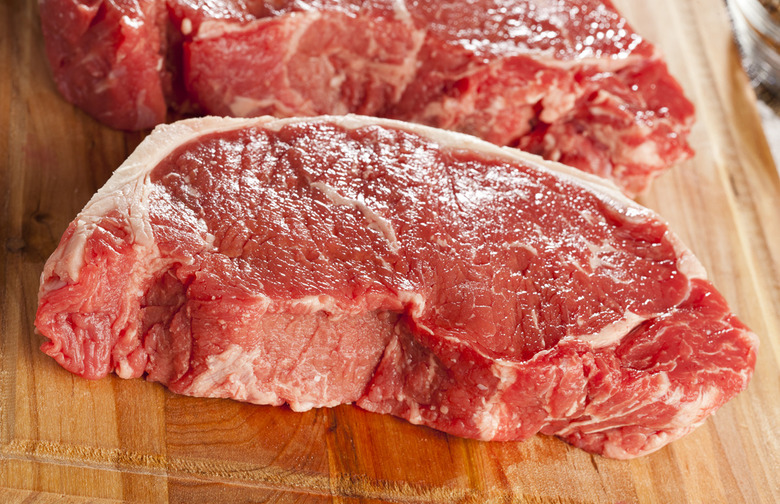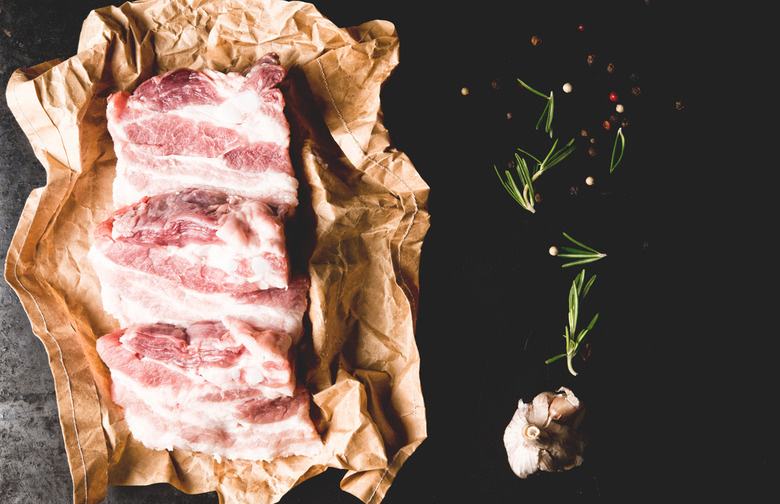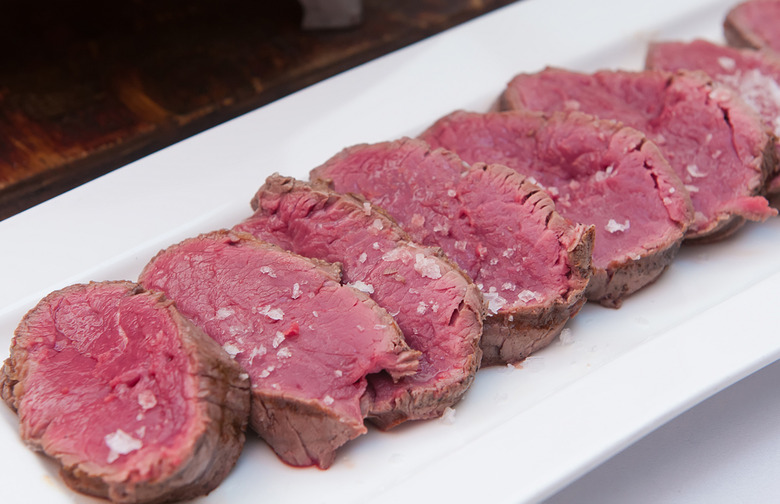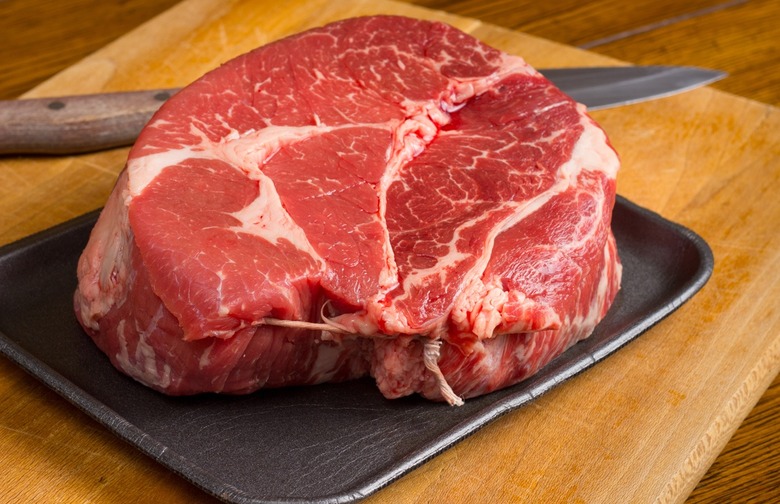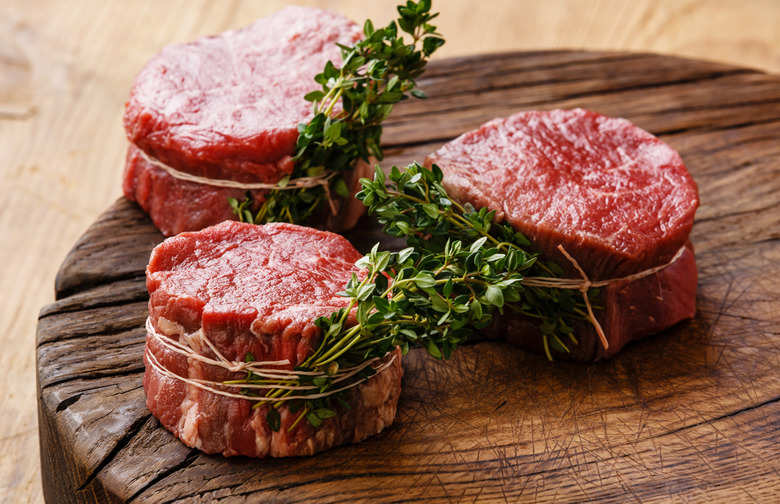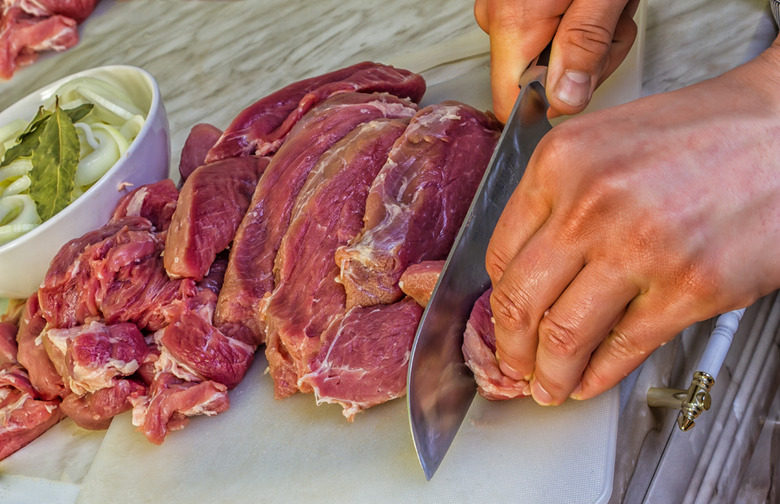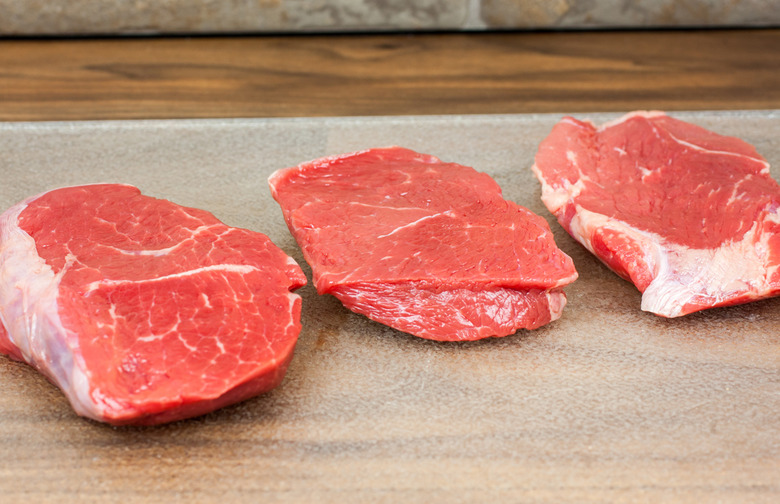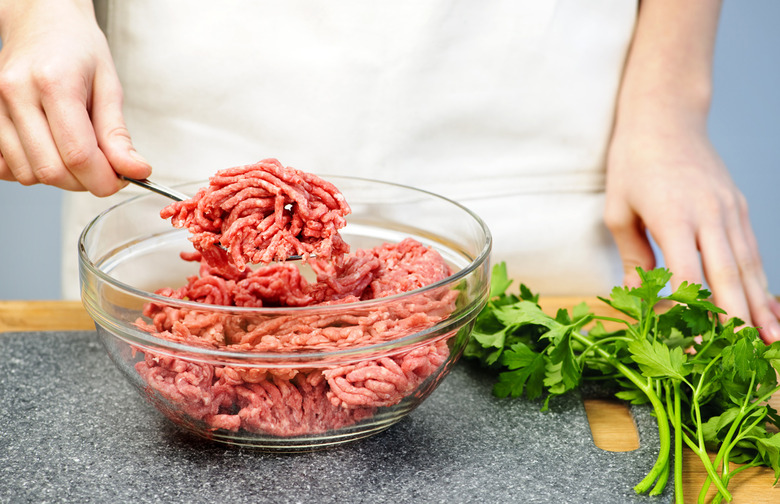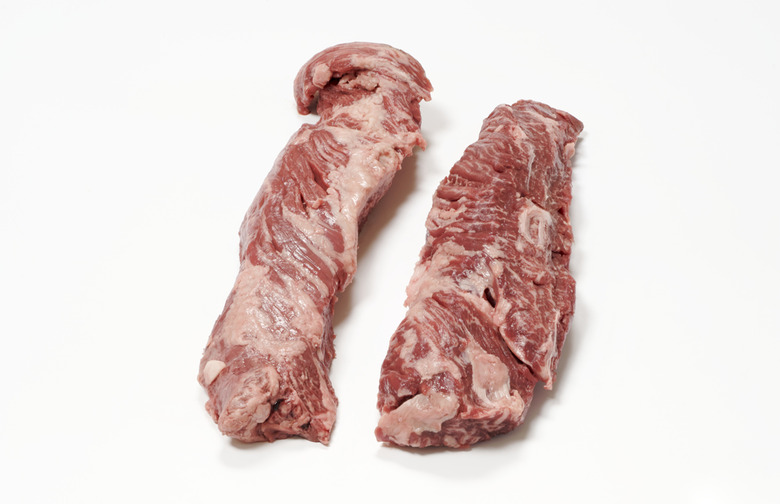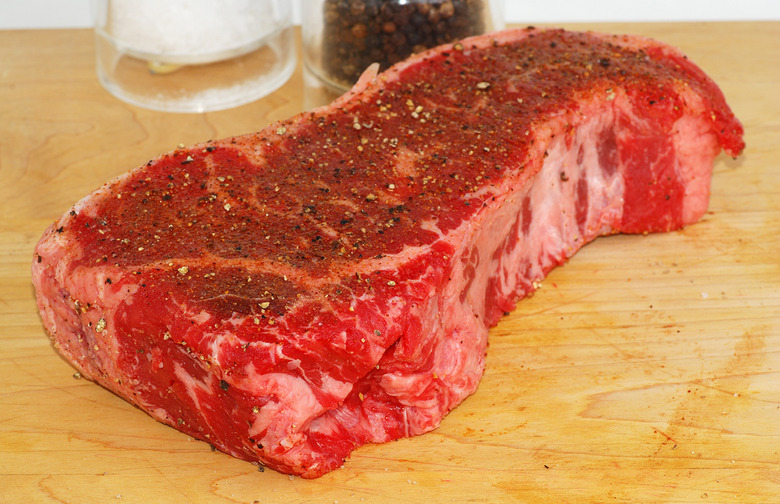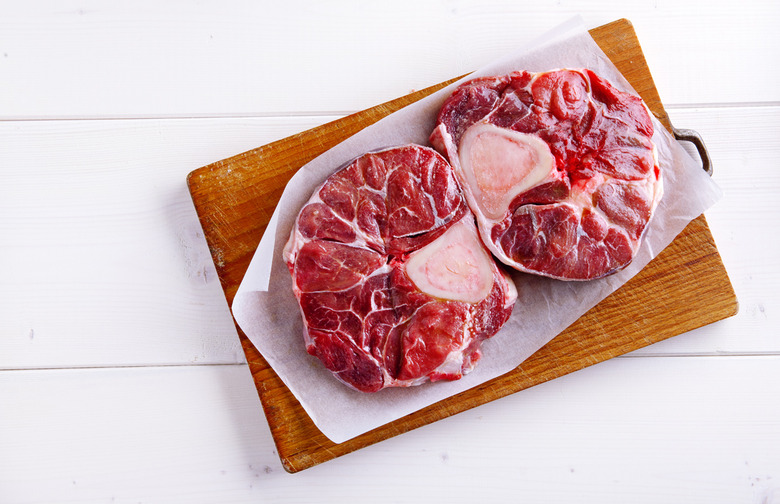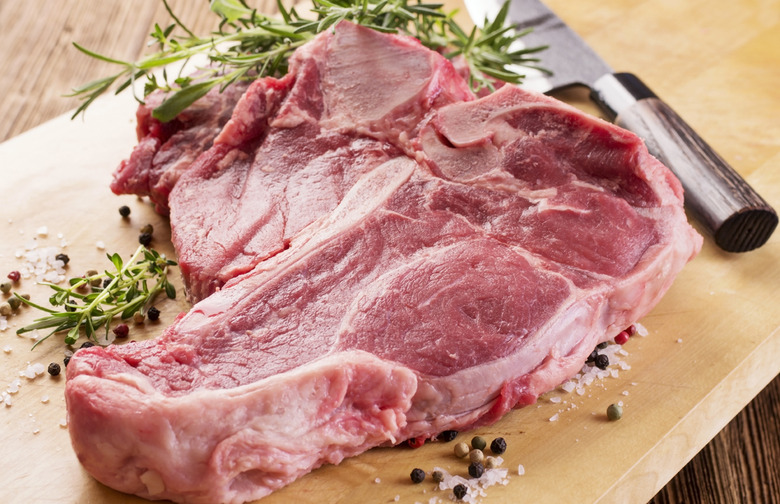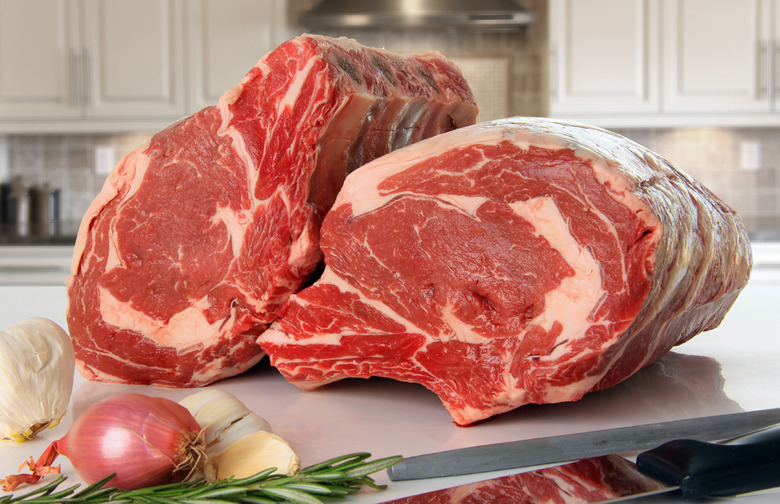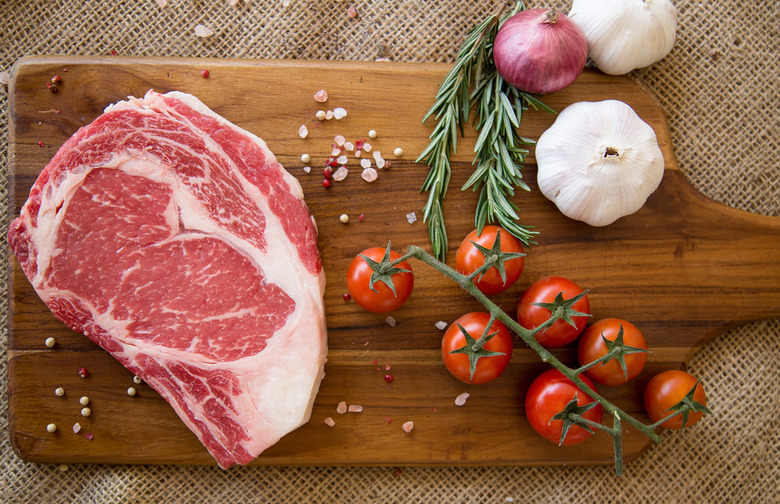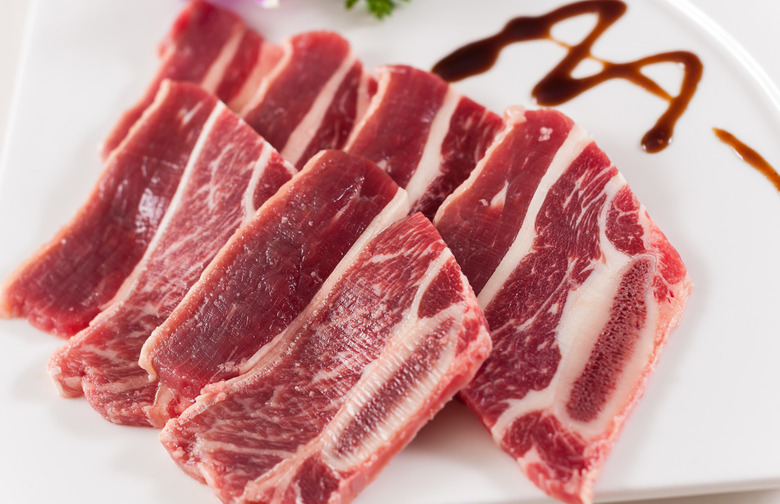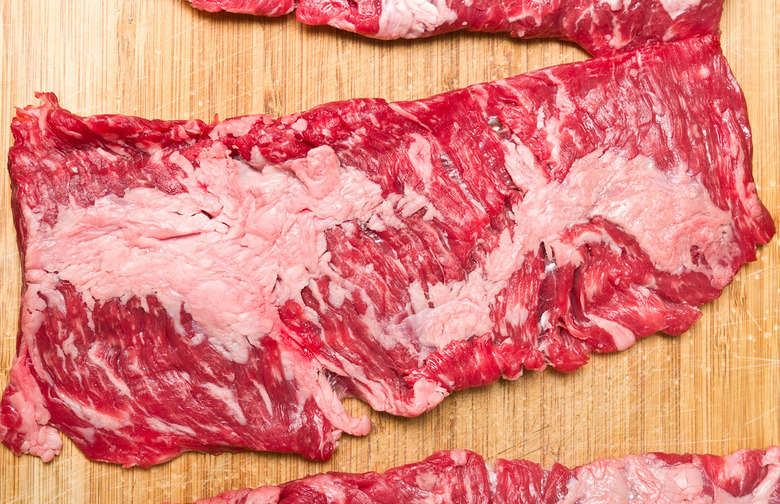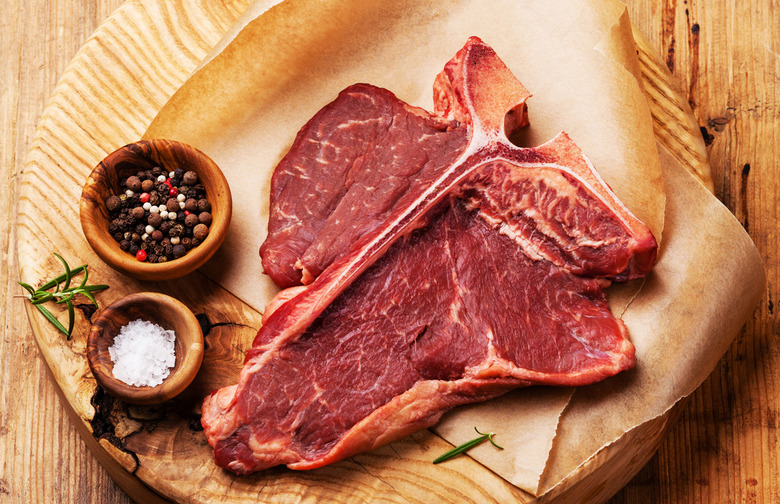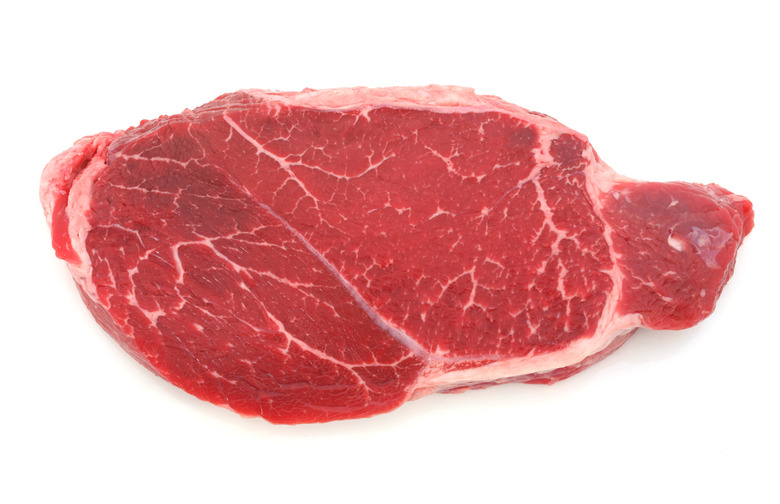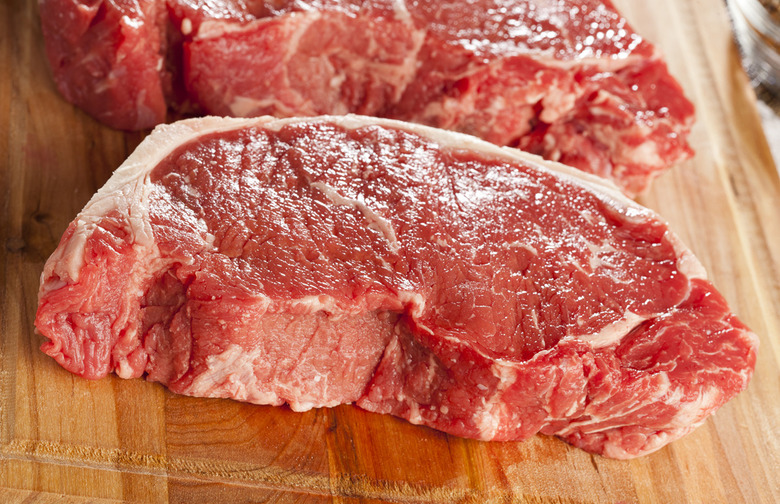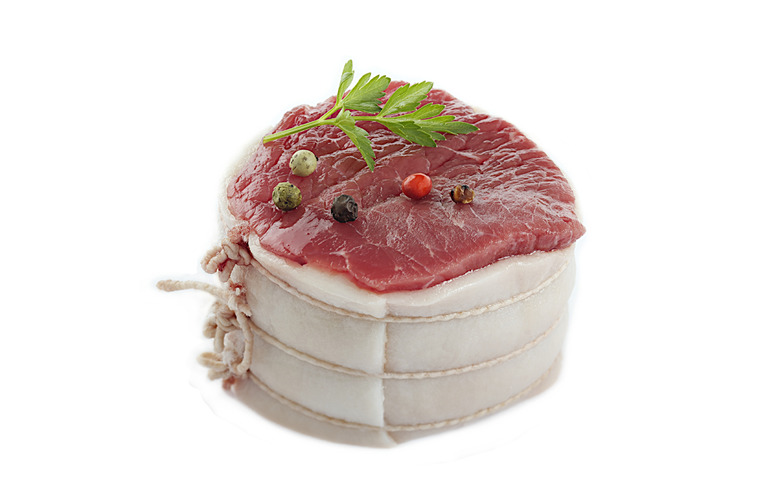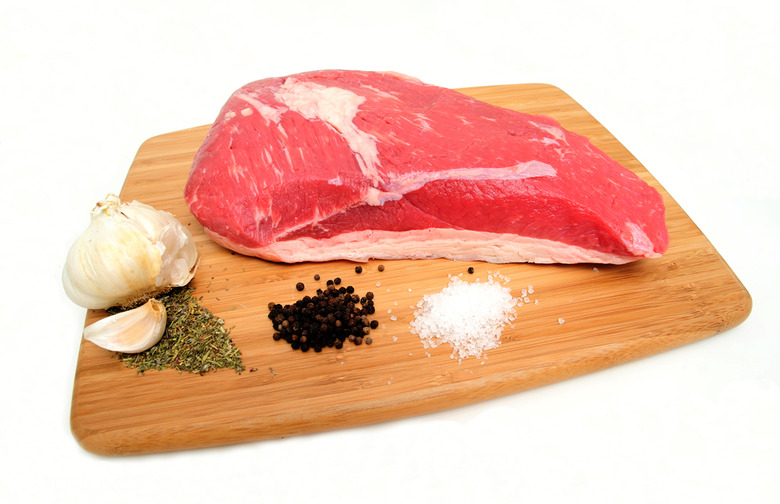How To Shop For Meat: The Everything Guide To Buying And Cooking Your Favorite Cuts
Looking for that steakhouse-quality dinner at home? It all starts at the butcher counter. In this everything guide to buying your favorite cuts of meat, we share tips from expert butchers and decode complicated USDA labels, so you can be sure you return home with the perfect cut of meat for your recipe.
To get the lowdown on what to look for when buying your favorite cuts of meat, we talked to expert butcher Rob Levitt of The Butcher & Larder. Levitt's shop, located in Local Foods, a local food hub and public market in Chicago, specializes in local, sustainable, and whole-animal butchery.
To help you along your shopping journey, we've rounded up some favorite cuts of steak, along with recipes, and tips for what to look for when picking out the perfect porterhouse or filet mignon.
Brisket
Brisket comes from the chest of cow, making a tougher cut of meat because of the connective tissues. Cooking brisket low and slow for several hours will yield a tender dish, but preparing excellent brisket starts at the butcher counter. Look for enough marbling to keep the meat moist while it slowly cooks, but shy away from pieces that have large chunks of fat running throughout the steak.
Châteaubriand
This expensive cut of beef, from the thicker butt-end of the tenderloin, is extremely tender because this part of the animal's musculature is rarely worked. While this tends to be a leaner cut of meat, look for a good amount of marbling when purchasing. Because of its larger size, chateaubriand is best slow-roasted, and then flash seared at a high heat at the end of cooking.
Chuck Roast
This cut is one of the toughest cuts of beef, and is best when slowly-braised, like pot roast. It comes from the shoulder, meaning there will be lots of connective tissue, fat, and collagen that needs to break down during the cooking process. Look for an evenly cut steak, so that your meat cooks evenly. Besides pot roast, chuck makes a good choice for stews, like beef bourguignon.
Filet Mignon
Perhaps one of the most popular cuts of meat because it's low in fat and tender, filet mignon comes from the center-portion of the tenderloin. Unlike chateaubriand, filet mignon is excellent with just a quick sear. Because of the quick cooking method typically applied, look for a steak with just a little marbling, so that your steak is melt-in-your-mouth tender.
Flank Steak
Flank steak has that characteristic long grain running the length of the cut. It comes from the lean underbelly of the cow, so there will be very little marbling, making it perfect for quick-searing. Tough silver skin, which is connective tissue, can be a problem with this cut, so be sure to ask the butcher to remove any that you see. When you get home, marinate your steak for about 30 minutes, quickly sear it, and slice it against to grain for best texture. Slicing against the grain cuts through the tissues so your bite of steak isn't tough and chewy.
Flat Iron
This cut of beef rose in popularity in the last two decades because it is so easy to prepare. The tender, flavorful cut of beef sits on top of the shoulder blade, and should be very well-marbled. The flat iron steak has a top section and bottom section, with a giant tendon (which the butcher removes) in the middle. This steak requires little effort to cook, just salt, pepper, and an olive oil rub, and then quickly sear it for about 4 to 5 minutes per side.
Ground Beef
I like the idea of grinding my own blend of flavorful chuck and short rib for the perfect burger — but who has the time? Ground beef you buy at the store is usually made from the leftover trimmings of whatever the label says (chuck, round, sirloin, etc), what is important to look at is the ration of fat to lean meat. For instance, a label that reads 80/20 means there is 80 percent lean beef to 20 percent fat in the package. Look for meat that is still bright red, a little brown only means that it has come into contact with oxygen, but grayish meat is certainly spoiled.
Hanger
Hanger steak comes from the diaphragm, and is similar in texture to flank steak. This cut of meat is lean and tender, which is why it is best cooked quickly over high heat. This isn't the ideal cut of meat for anyone who likes there steak more well-done because this cut of meat becomes tough when cooked past medium-rare.
New York Strip
This classic steakhouse cut comes from the short loin of the cow. Strip steaks tend to have a little more chew and more distinctive grain than a filet, but are loaded with beefy flavor. Look for a strip with even marbling and no large pockets of fat for the best flavor and texture.
Osso Buco
Osso Buco, which comes from the leg or shank of the cow is sometimes referred to as the, "peasant cut," of meat, but don't let that name fool you, this cut of beef — or, often, of veal — is one of the tastiest. Its unique appearance is hard to miss; the shank bone running through the middle is full of flavorful marrow that renders during the slow braising process. Don't be put off by the visible sinew; it's nothing a slow braise won't take care of. Also, make sure the bone looks fresh and the meat is bright red for beef or a pale pink for veal.
Porterhouse
This monster T-bone must be 1 ½ inches or wider to qualify for the porterhouse designation. Cut from the short loin, and is made up of a strip steak and tenderloin connected by a (you, guessed it) t-shaped bone. Look for more marbling in the strip portion, while the tenderloin will be a little leaner.
Rib Roast
A prime rib roast is one of those monster cuts of meat that we only showcase maybe once or twice a year. It requires a little more work than searing a filet on the grill, but when executed perfectly, it's the perfect union of juicy meat and crisp fat. This prime rib roast comes from the center rib section, for a total of six ribs — ribs six through 12 specifically. When buying for a crowd, assume you will need one pound of bone-in meat per person. Finally, the meat should have a good marbling to it, and a thin layer of fat on the top that will essentially baste the meat while it cooks in the oven.
Ribeye
Ribeyes are a fattier cut of meat that comes from the top of the rib primal. For the best texture, you will want a steak that is at least an inch thick with plenty of marbling. The best, center-cut ribeyes will have a generously sized "eye" with a pocket of fat right below it. The fat will flavor the meat as it cooks.
Short Ribs
This cut of meat is typically on the cheaper end of the spectrum, but has become increasingly popular because the bones and fat deliver tons of flavor. Unless you are grinding for hamburger meat, you will want bone-in short ribs that are perfect for braising. The otherwise tough cut of meat becomes fork tender when braised low and slow for hours, which means a ratio of 50/50 fat to meat is completely OK.
Skirt Steak
Skirt steak comes from the diaphragm, like hanger steak, but is the outer piece. The tough, outer membrane (usually removed by the butcher) has to go before you can cook it. The fat to meat ratio makes this steak makes this cut really flavorful. Be sure to remove any large chunks of fat, but the meat will retain its characteristic striations.
T-Bone Steak
This two-for-one cut of tenderloin and strip steak is the smaller cut of a porterhouse. You can look for all the same similarities here, including lots of marbling, a thicker cut for grilling (at least an inch and a half), and a generously sized tenderloin portion (for the best value).
Top Round, London Broil
The top round or London broil comes from the hind leg of the cow. It is low in fat, so don't expect to see lots of marbling. London broil is great with a simple marinade and then cooked on the grill or in the oven on low heat for about 45 minutes.
Top Sirloin Steak
This cut of meat comes from the lower back of the cow, so it is very lean, but also very tender. This steak won't have much marbling; most of the fat will come from the fat cap at the top of the cut. Render the fat in a pan while cooking for a caramelized, fatty flavor.
Tournedo
The final cut from the tenderloin is known at the tournedo. This cut comes from the tapered end of the tenderloin. This petite cut will have the same lack of marbling, but tender result when seasoned and seared quickly in a pan. Look for thick portions if you like your meat on the rare side.
